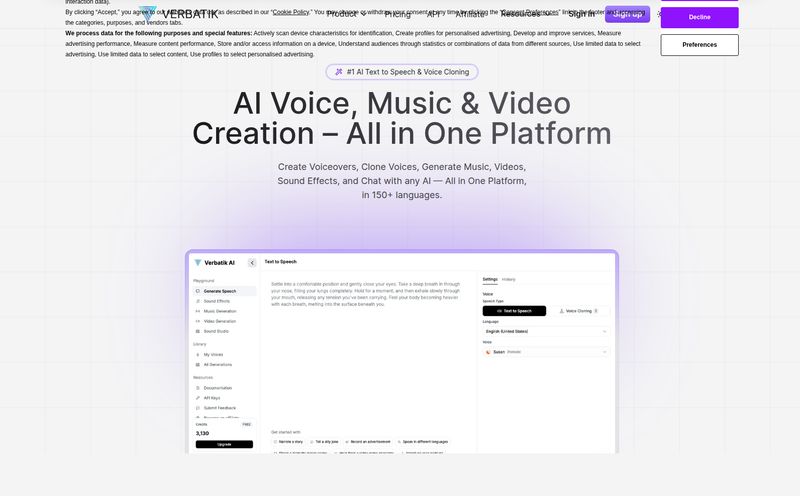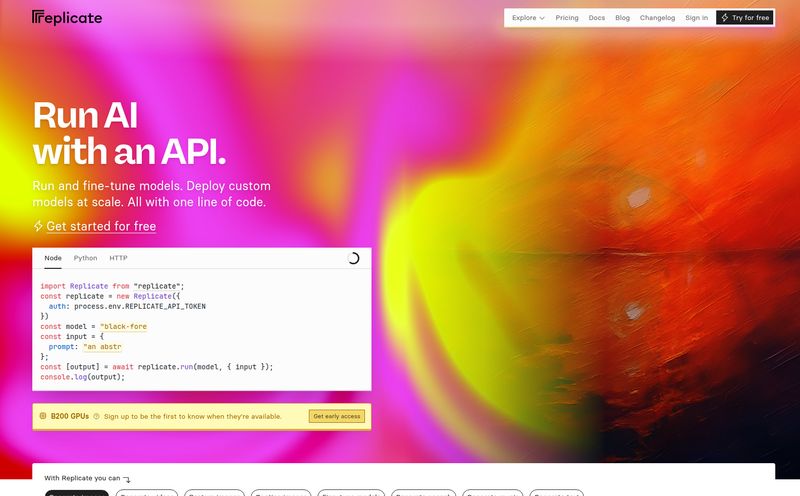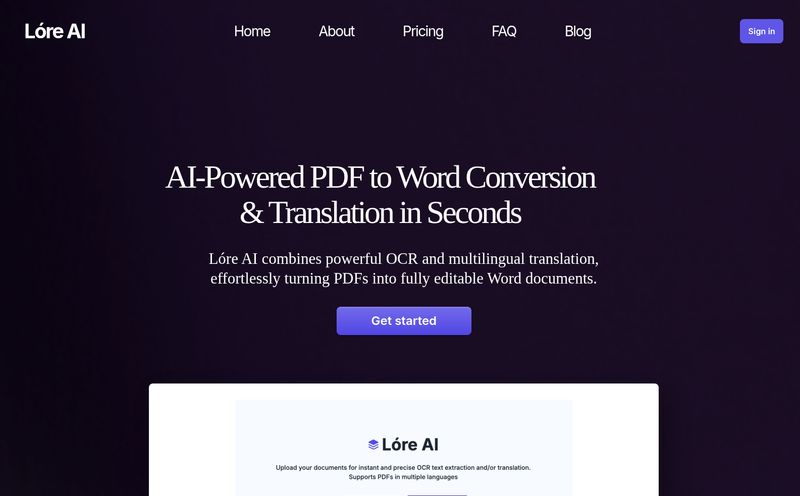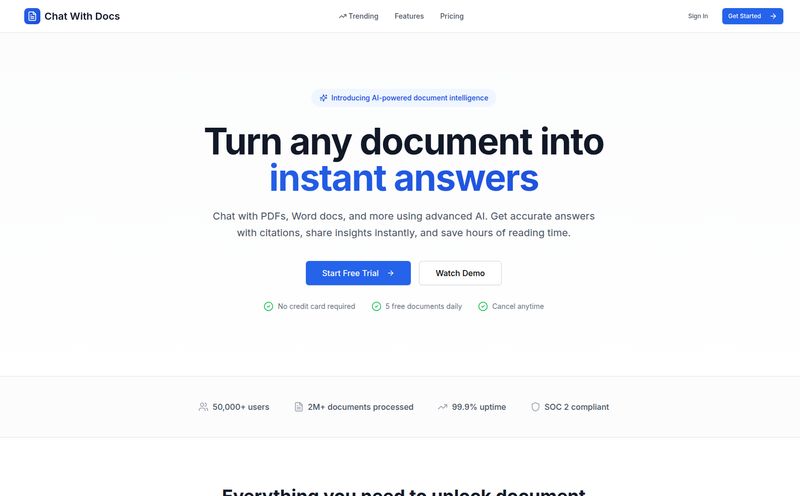If you’ve ever managed an app localization project, you know the pain. You hand off a spreadsheet of strings to a translator, they send it back, and you plug it into your app only to find that “Submit” was translated as “Surrender,” or a button label is now three times too long for the button itself. It’s a context-less nightmare. We’ve all been there, sending frantic emails with screenshots attached, trying to explain what that one cryptic variable, {{user_name}}, actually is.
For years, we’ve been trying to bridge this gap. We’ve used complex TMS platforms, written exhaustive documentation for translators, and still, things fall through the cracks. So when I heard about Tolgee, an open-source platform promising AI translation with actual context, my cynical SEO-blogger heart skipped a beat. Is this it? The tool that finally gets it right?

Visit Tolgee
So, What Exactly is Tolgee?
At its core, Tolgee is a localization platform built for modern development workflows. Think of it as a central hub for all your app's text. But it's got a secret weapon. It’s open-source, which immediately gets a nod of approval from me, and it cleverly combines AI-powered translation with a system that understands where and how your text is being used. This means it’s not just translating words; it’s translating experiences.
It’s available as a cloud service or a self-hosted version, giving teams the flexibility to choose what works for their security and infrastructure needs. But the real story isn't the hosting, it's the intelligence.
The Real Magic? It’s All About Context.
This is the part that genuinely got me excited. The biggest failure of most machine translation is its ignorance. It doesn't know if a word is on a button, in a title, or part of a warning message. Tolgee tackles this head-on with what they call in-context translating.
How It Gives Your AI a Backstage Pass
Tolgee’s integrations don’t just pull text strings; they pull screenshots and other contextual data directly from your app as you develop it. It’s like giving the AI a live feed of your UI. When it translates a string, it knows what the screen looks like. This simple (but technically complex) idea eliminates so much of the guesswork. No more asking developers what a certain key means—the context is right there. This dramatically improves the quality of the initial AI translation pass, making it far superior to just pasting strings into a generic translation service.
Fine-Tuning with the AI Playground
Another neat feature is the AI Playground. Before you unleash the AI on your entire project, you can go into this little sandbox and test your prompts. You can add extra instructions, define the tone of voice for a specific language, or provide project-wide descriptions to guide the AI. Want your Spanish translation to be more formal and your French to be more casual? You can tweak the prompts to make that happen. You can even bring your own LLM model from OpenAI, Anthropic, or Google, which is a fantastic move for flexibility and avoiding rate limits.
But Don’t Fire Your Translators Just Yet
Here’s where Tolgee shows its maturity. It doesn’t pretend that AI is a perfect, infallible god of language. The entire workflow is built around the idea of “Translate with AI, Reviewed by Humans.” The AI does the heavy, repetitive lifting—the 80% of the work that used to be a tedious grind. Then, your human translators or native-speaking team members can come in and refine, polish, and perfect the text. They aren't starting from scratch; they're elevating a very good draft into a flawless final product. It’s a collaborative approach that saves a ton of time and money without sacrificing quality. And honestly, thats the sweet spot we've all been looking for.
Breaking Down the Tolgee Pricing (Is It Worth It?)
Alright, let’s talk turkey. A great tool is only great if you can afford it. Tolgee uses a flexible, pay-as-you-go model that I find pretty reasonable, especially for growing teams. It's broken down into a few tiers.
| Plan | Price | Best For | Key Features |
|---|---|---|---|
| Free | €0 | Individuals and small projects | 500 keys, 3 seats, in-context translating |
| Team | €42 / month | Small to mid-size teams | 3,000 keys, 10 seats, webhooks, advanced support |
| Business | €125 / month | Larger teams, open-source projects | 10,000 keys, 15 seats, AI customization, tasks, labels |
| Enterprise | Custom | Large organizations with specific needs | Single Sign-On, success manager, premium support |
The Free Plan: More Than Just a Teaser
The free tier is genuinely useful. With 500 keys and 10,000 machine translation credits, it’s more than enough for a personal project, a small startup's MVP, or just to properly kick the tires before committing. I appreciate when companies make their free tier functional, not just a frustrating ad for their paid plans.
The Team and Business Tiers
As you scale, the Team and Business plans add more keys, more seats, and crucial workflow features like webhooks, tasks, and granular permissions. The Business plan also includes the AI customization I mentioned earlier, which is a huge plus. One thing I love is that the Business plan is free for open-source projects. That’s a fantastic way to give back to the community.
The Self-Hosted Route for Ultimate Control
For companies with strict data privacy requirements or those who just like to have everything on their own servers, the self-hosted option is a godsend. You get the power of the platform without sending your data to a third-party cloud. This requires some technical know-how to set up and maintain, but for the right team, it’s the perfect solution.
The Good, The Bad, and The Code-y
No tool is perfect. So, let’s get real. The biggest pro is obviously the context-aware AI translation. It’s a game-changer. Being open-source and customizable is a massive plus in my book. The hybrid human-review model ensures you don't sacrifice quality for speed.
On the flip side, this isn't a simple plug-and-play tool for your marketing manager. It requires a bit of technical setup and integration into your development workflow. It's not a heavy lift for a dev team, but it’s a lift nonetheless. And while the AI is impressive, you still need that human review for anything customer-facing. Don't expect to just set it and forget it. Its a powerful assistant, not a full replacement for a localization expert.
My Verdict: Who Should Be Using Tolgee?
In my opinion, Tolgee hits a real sweet spot. It's ideal for:
- Startups and scale-ups who need to move fast and localize efficiently without a massive budget.
- Development teams who want to integrate localization directly into their CI/CD pipeline and stop dealing with spreadsheets.
- Open-source projects that need to support a global community (especially with that free Business plan).
- Companies that are tired of the disconnect between developers and translators and want a single source of truth.
If you're a massive enterprise with a 20-year-old translation management system and rigid processes, it might be a tougher sell. But for anyone building products for a global audience in 2024, this is the kind of modern workflow you should be looking at.
Frequently Asked Questions about Tolgee
What are 'keys' in Tolgee?
Think of a key as a single piece of text, like a button label or a sentence. "app.title" would be one key, and its translation "My Awesome App" would be its value. The number of keys you have generally corresponds to the amount of text in your application.
Is the AI translation really free?
Yes, to an extent. The plans come with a generous amount of free machine translation (MT) credits. For example, the free plan includes 10,000 credits. If you exceed that, you'll pay a small amount per extra credit. It’s a very cost-effective way to get a first-pass translation done.
Can I use Tolgee with my React/Vue/Angular project?
Absolutely. Tolgee has specific integrations for all major frontend frameworks, which is what allows it to grab that all-important in-context information automatically. The setup is generally straightforward for any experienced developer.
What does it mean that Tolgee is open-source?
It means the source code for the platform is publicly available. This has a few benefits: you can self-host it, you can customize it if you have the skills, and you can be confident in its security because the community can inspect the code. It builds a layer of trust that you don't get with closed-source, black-box tools.
The Final Word
I've seen a lot of tools come and go, each promising to revolutionize localization. Most of them are just old ideas in a new UI. Tolgee feels different. By focusing on the single biggest problem—context—it provides a genuinely smarter, faster, and more collaborative way to translate software. It’s not magic, and it still requires smart humans to get the best results. But it’s a powerful ally in the battle for global-ready apps. I’m impressed, and I'll definitely be keeping a close eye on this one.
Reference and Sources
- Tolgee Official Website
- Tolgee Pricing Page
- OpenAI - One of the LLM providers you can integrate.



